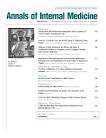Ann. Intern. Med:安贝生坦对肺纤维化有害无益
2013-05-09 佚名 EGMN
据5月7日《内科学年鉴》杂志发表的一项Ⅲ期国际临床试验,内皮素受体拮抗剂安贝生坦不仅对特发性肺纤维化患者没有助益,反而会促进病情进展。 安贝生坦是一种比波生坦选择性更高的内皮素受体拮抗剂,目前已获准用于治疗肺动脉高压。临床前数据显示拮抗内皮素受体可能减轻肺纤维化的严重程度,另外,在对多种间质性肺病患者进行的一项Ⅱ期研究中,一种与安贝生坦有关的内皮素受体拮抗剂——波生坦改善了特发性肺纤维化
据5月7日《内科学年鉴》杂志发表的一项Ⅲ期国际临床试验,内皮素受体拮抗剂安贝生坦不仅对特发性肺纤维化患者没有助益,反而会促进病情进展。
安贝生坦是一种比波生坦选择性更高的内皮素受体拮抗剂,目前已获准用于治疗肺动脉高压。临床前数据显示拮抗内皮素受体可能减轻肺纤维化的严重程度,另外,在对多种间质性肺病患者进行的一项Ⅱ期研究中,一种与安贝生坦有关的内皮素受体拮抗剂——波生坦改善了特发性肺纤维化(IPF)患者的生存状况,鉴于此,华盛顿大学西雅图分校医学中心呼吸与危重症科的Ganesh Raghu医生及其同事开展了这项大型Ⅲ期研究。
他们将安贝生坦与一种匹配的安慰剂进行了比对,受试者为492例来自136家医院的患者,这些医院分布于北美、南美、欧洲、亚洲、新西兰以及澳大利亚。基线时,治疗组和对照组患者在人口学特征、肺血流动力学、肺功能、6分钟步行距离以及生活质量方面相近。在招募的受试者人数达到预期总招募人数的75%时,研究者进行了一项中期安全性和疗效分析,结果显示该药未改善主要终点,即至病情进展的时间、因任何原因死亡、因呼吸系统指征而住院或肺功能下降。该试验的发起者——吉利德科学公司终止了研究。安贝生坦(329名受试者)或安慰剂(163名受试者)的平均暴露间隔时间大约为35周。
分析结果为,安贝生坦治疗组(27.4%)显示IPF进展的患者例数明显多于安慰剂对照组(17.2%)。治疗组因呼吸系统疾病住院(13.4% vs. 5.5%)或死亡(7.9% vs 3.7%)的患者例数也显著多于对照组,其中包括急性IPF加重及肺炎(Ann. Intern. Med. 2013; 158:641-90)。然而,两个试验组之间在次要终点,即CO扩散容量、用力肺活量、6分钟步行距离、SF-36评分(用于衡量生活质量)或短暂呼吸困难指数评分方面没有显著的统计学差异。这些结果不因受试者是否合并肺动脉高压而异。
上述观察结果为“安贝生坦治疗IPF无效”的说法提供了极具说服力的证据,并且阻止了对该药用于IPF治疗的进一步临床评估。这些数据为临床医生不使用安贝生坦治疗IPF患者提供了明确的指导依据,无论患者是否存在肺动脉高压。不过,有肺动脉高压的患者亚组样本量小,效能不足以证实有统计学差异,因此应谨慎地对该结果进行阐释。
在不良事件方面,服用安贝生坦组报告呼吸困难、IPF加重、头昏及周围水肿的例数显著多于安慰剂组。安贝生坦组因安全及耐受性问题退出研究的患者例数(3%)是安慰剂组(1%)的3倍。
该试验由吉利德科学公司资助,该公司参与了本研究的整个过程。
与肺纤维化相关的拓展阅读:
- ARD:混合型结缔组织病患者常有肺纤维化
- AIM:沙利度胺可改善特发性肺纤维化(IPF)患者咳嗽症状
- 肺纤维化急性发作时灌洗液中的胃蛋白酶水平升高
- 服用他汀或促肺纤维化(间质肺病),与NLRP3有关 更多信息请点击:有关肺纤维化更多资讯

Ambrisentan doesn't help, may worsen pulmonary fibrosis
The endothelin-receptor antagonist ambrisentan not only failed to benefit patients with idiopathic pulmonary fibrosis, it also may have facilitated disease progression in an international phase III clinical trial reported May 7 in Annals of Internal Medicine.
The trial was terminated early when an interim analysis of the data showed that patients treated with ambrisentan were more likely than were control subjects receiving placebo to show progression of idiopathic pulmonary fibrosis (IPF) and to require more hospitalizations for respiratory indications, including acute IPF exacerbations and pneumonia. The findings were the same whether the study subjects had concomitant pulmonary hypertension.
"The observations in this study provide compelling evidence for ambrisentan as an ineffective treatment for patients with IPF and preclude further clinical evaluation of the drug as therapy for the disease. The data provide a basis for explicit guidance to clinicians not to use ambrisentan to treat patients with IPF, regardless of the presence of pulmonary hypertension," said Dr. Ganesh Raghu of the division of pulmonary and critical care medicine, University of Washington Medical Center, Seattle, and his associates.
The researchers undertook this large phase III study because preclinical data suggested that antagonism of endothelin receptors could lessen the severity of pulmonary fibrosis. And in a phase II study involving patients with a variety of interstitial lung diseases, a related endothelin antagonist, bosentan, had improved survival in the subgroup of patients with IPF.
Ambrisentan is a more selective endothelin A-receptor antagonist than bosentan and is currently approved for the treatment of pulmonary arterial hypertension. Dr. Raghu and his colleagues compared it against a matched placebo in 492 IPF patients treated at 136 clinical sites in North America, South America, Europe, Asia, New Zealand, and Australia.
When approximately 75% of the intended total enrollment of 660 patients was reached, an interim safety and efficacy analysis showed that the drug did not improve the primary endpoint, which was a composite of the time to disease progression, death from any cause, hospitalization for respiratory events, or a decrease in lung function. The trial sponsor, Gilead Sciences, terminated the study, and the findings were analyzed on the subjects enrolled up until that point.
The mean interval of exposure to ambrisentan (329 subjects) or placebo (163 subjects) was approximately 35 weeks. At baseline, patients in the active-treatment group and control group were similar regarding demographic traits, pulmonary hemodynamics, lung function, 6-minute walk distance, and quality of life.
Significantly more patients in the ambrisentan group (27.4%) than in the placebo group (17.2%) showed IPF progression. The active-treatment group also had significantly more respiratory hospitalizations (13.4% vs. 5.5%) and deaths (7.9% vs 3.7%) than did the control group, Dr. Raghu and his associates wrote (Ann. Intern. Med. 2013; 158:641-90).
However, there were no significant differences between the two study groups in the secondary endpoints of diffusion capacity for carbon monoxide; forced vital capacity; 6-minute walk distance; scores on the SF-36, which measures quality of life; or scores on the Transitional Dyspnea Index.
These findings were essentially the same when the data were analyzed according to whether or not patients had concomitant pulmonary hypertension at baseline. However, the subset of patients with pulmonary hypertension was small and not adequately powered to demonstrate a significant difference, so this finding should be interpreted with caution, the investigators said.
Regarding adverse events, significantly more patients taking ambrisentan than placebo reported dyspnea, worsening IPF, dizziness, and peripheral edema. Three times as many patients receiving ambrisentan (3%) dropped out of the study because of safety and tolerability issues, compared with those receiving placebo (1%).
This trial was supported by Gilead Sciences, which was involved in all aspects of the study.
本网站所有内容来源注明为“梅斯医学”或“MedSci原创”的文字、图片和音视频资料,版权均属于梅斯医学所有。非经授权,任何媒体、网站或个人不得转载,授权转载时须注明来源为“梅斯医学”。其它来源的文章系转载文章,或“梅斯号”自媒体发布的文章,仅系出于传递更多信息之目的,本站仅负责审核内容合规,其内容不代表本站立场,本站不负责内容的准确性和版权。如果存在侵权、或不希望被转载的媒体或个人可与我们联系,我们将立即进行删除处理。
在此留言








#Med#
96